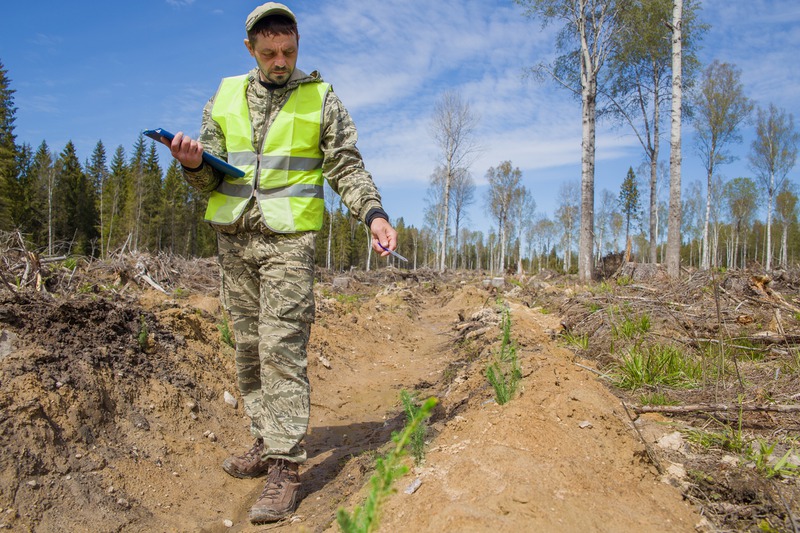
Have you ever wandered through a forest and marveled at its unending greenery? It’s incredible. But what many need to realize is that these magnificent natural resources don’t just stay healthy on their own. They require active management to thrive, resist diseases, and maintain biodiversity. But wait up, what does active management entail, and why is it so crucial for our forests and the people who depend on them?
1. Preventing Forest Fires
Active management practices such as controlled burns and fuel reduction efforts help reduce the risk of catastrophic wildfires. By clearing out excess vegetation and implementing prescribed burns, forest managers can minimize fuel buildup, decrease the intensity of wildfires, and protect both human communities and wildlife habitats.
Logging and land clearing play vital roles in maintaining healthy forests when done responsibly. Take Benton County logging, for example. In this part of the world, logging isn’t just about cutting down trees—it’s about strategic removal to promote growth, prevent disease spread, and reduce fire risk.
2. Controlling Pests and Diseases
Forests are vulnerable to a variety of pests and diseases that can devastate tree populations if left unchecked. Active forest management involves monitoring for pest infestations and implementing measures such as selective harvesting, pesticide applications, and biological controls to mitigate the spread of pests and diseases and protect forest health.
3. Preserving Habitat for Wildlife
Healthy forests provide critical habitat for a diverse range of plant and animal species. Active forest management practices, such as maintaining a variety of plant species and creating diverse age and structural classes of forest stands, help preserve habitat diversity and support the needs of wildlife populations. By managing forests actively, we can ensure that vital habitats remain intact for species to thrive.
In Western Oregon logging and forest management are taken seriously. Techniques like selective cutting, shelterwood cutting, and clearcutting, when appropriate, are employed to mimic natural disturbances, foster forest regeneration, and maintain habitat diversity.
4. Supporting Natural Regeneration
Active management practices promote forest natural regeneration by creating conditions conducive to seed germination, seedling establishment, and forest growth. Activities such as selective harvesting, thinning, and reforestation efforts can enhance forest regeneration processes, maintain ecosystem function, and ensure the long-term sustainability of forest resources.
When it comes to tree harvesting Oregon, practitioners follow sustainable models that allow for trees to be harvested while minimizing impact on the ecosystem. Responsible tree harvesting maintains forest health and productivity, ensuring that forests remain viable for future use.
5. Promotion of Keystone Species
Keystone species play a disproportionate role in shaping ecosystems and supporting biodiversity. Active forest management can help promote the abundance and diversity of keystone species, such as cavity-nesting birds, pollinators, and large predators, by providing suitable habitats and addressing threats to their populations. By conserving keystone species, forest managers indirectly support the broader biodiversity of forest ecosystems.
6. Adaptation to Environmental Changes
Active forest management allows for adaptive management strategies that enable forests to respond to environmental changes, such as climate change, habitat fragmentation, and natural disturbances. By monitoring ecosystem health and implementing adaptive management practices, forest managers can help ensure that forests remain resilient in the face of ongoing environmental challenges, supporting biodiversity over the long term.
7. Contribution to the Economy and Job Creation
Forests are a goldmine for economic activities. From lumber for building to material for paper products, forests are integral to many industries. By managing forests properly, we ensure that these resources are available both now and in the long term, providing jobs and resources for communities.
8. Recreation and Aesthetic Value
There’s also the joy that forests bring to people around the world. Hiking, camping, or simply enjoying the serenity of a forest – these experiences rely on healthy, well-managed forests. Through active forest management, we preserve these natural spaces for everyone to enjoy.
Challenges in Forest Management
Forest management faces several challenges, and navigating them requires careful consideration and strategic planning. Here are some key challenges:
-
Balancing economic demands with conservation: Forest managers must find a delicate balance between meeting economic needs for timber production and preserving forest ecosystems for conservation, wildlife habitat, and recreation.
-
Understanding public and stakeholder opinions: Forest management involves diverse stakeholders with varied perspectives, requiring effective communication, engagement, and collaboration to achieve sustainable outcomes.
-
Adapting to climate change: Climate change poses challenges such as altered weather patterns and increased risks from pests and wildfires, necessitating adaptive management strategies to enhance forest resilience and capitalize on new opportunities.
-
Sustaining biodiversity and ecosystem services: Preserving biodiversity and ecosystem services amidst human pressures and environmental changes is crucial, requiring habitat protection, species conservation, and landscape-level planning.
-
Addressing illegal logging and deforestation: Combatting illegal logging and deforestation is essential for forest conservation and livelihoods, necessitating collaboration with governments, law enforcement, and local communities to enforce regulations and promote responsible forest stewardship.
Final Thoughts
Active forest management is about finding harmony between our needs and the needs of the natural world. It’s a complex dance that requires understanding, patience, and respect. By managing forests actively, we’re not just looking after trees – we’re nurturing a resource that sustains life in countless ways. So next time you breathe in that fresh forest air, remember the hard work and planning that goes into keeping that ecosystem vibrant and productive. It is, indeed, about preserving a legacy for generations to come.






